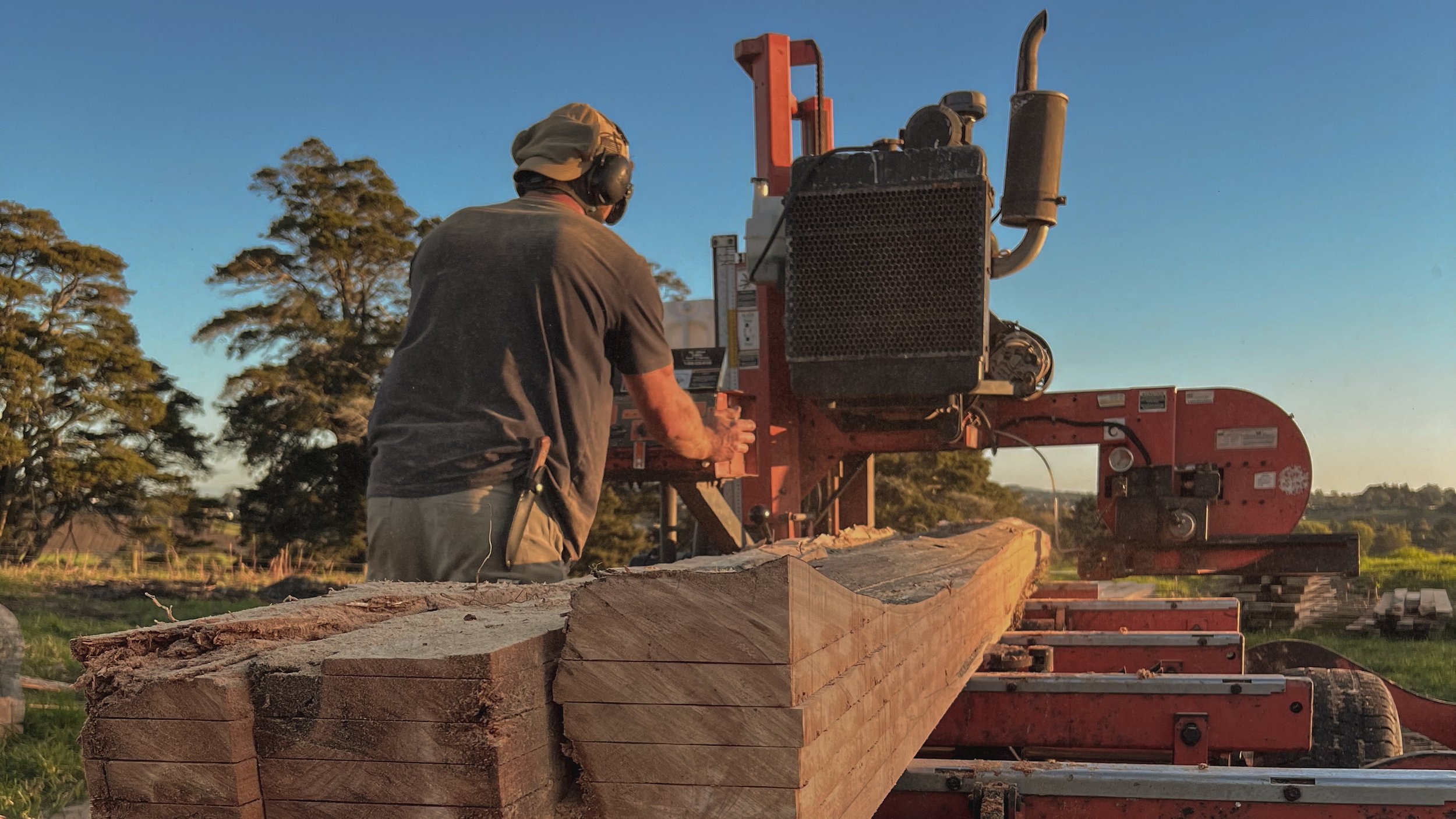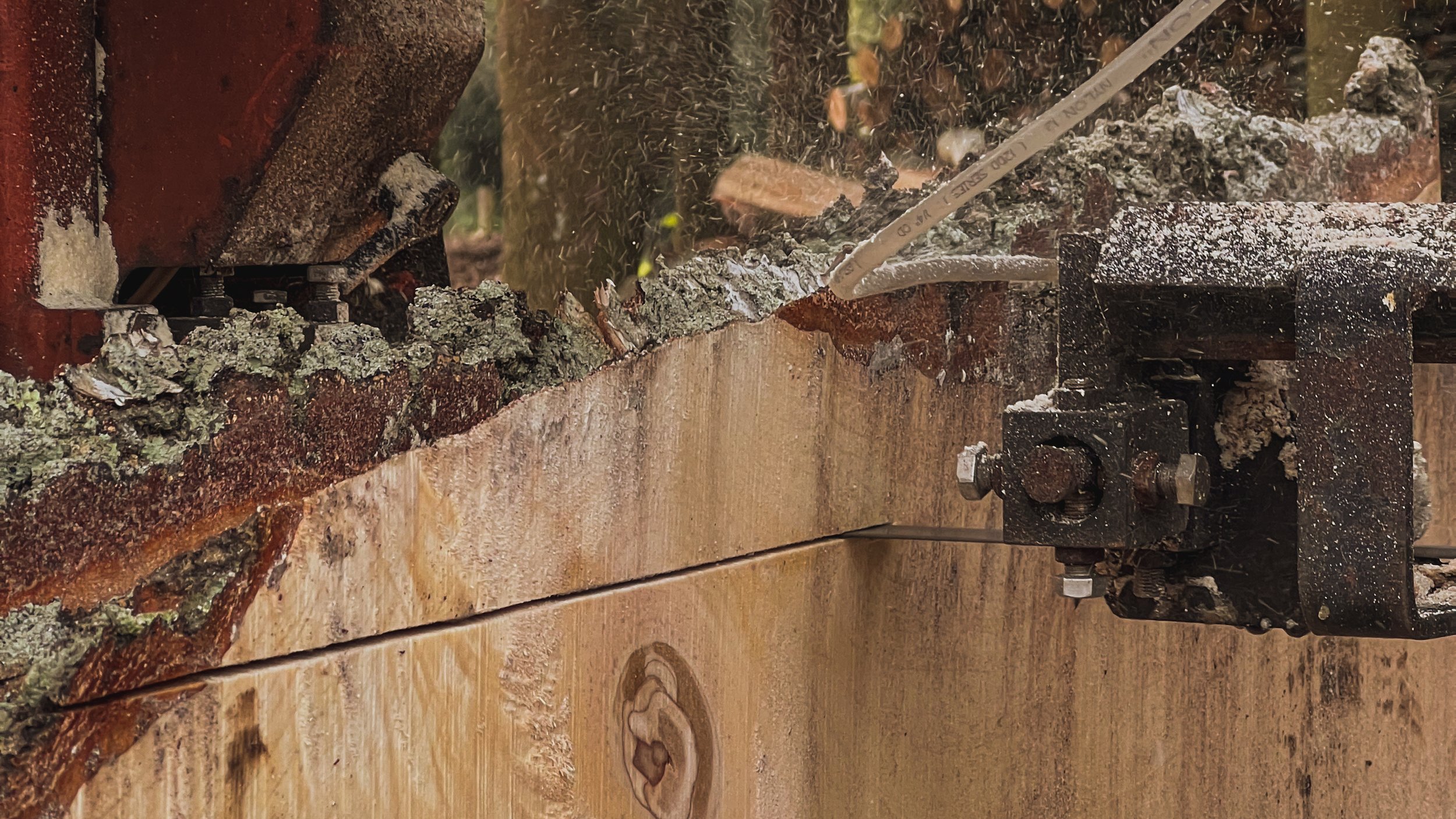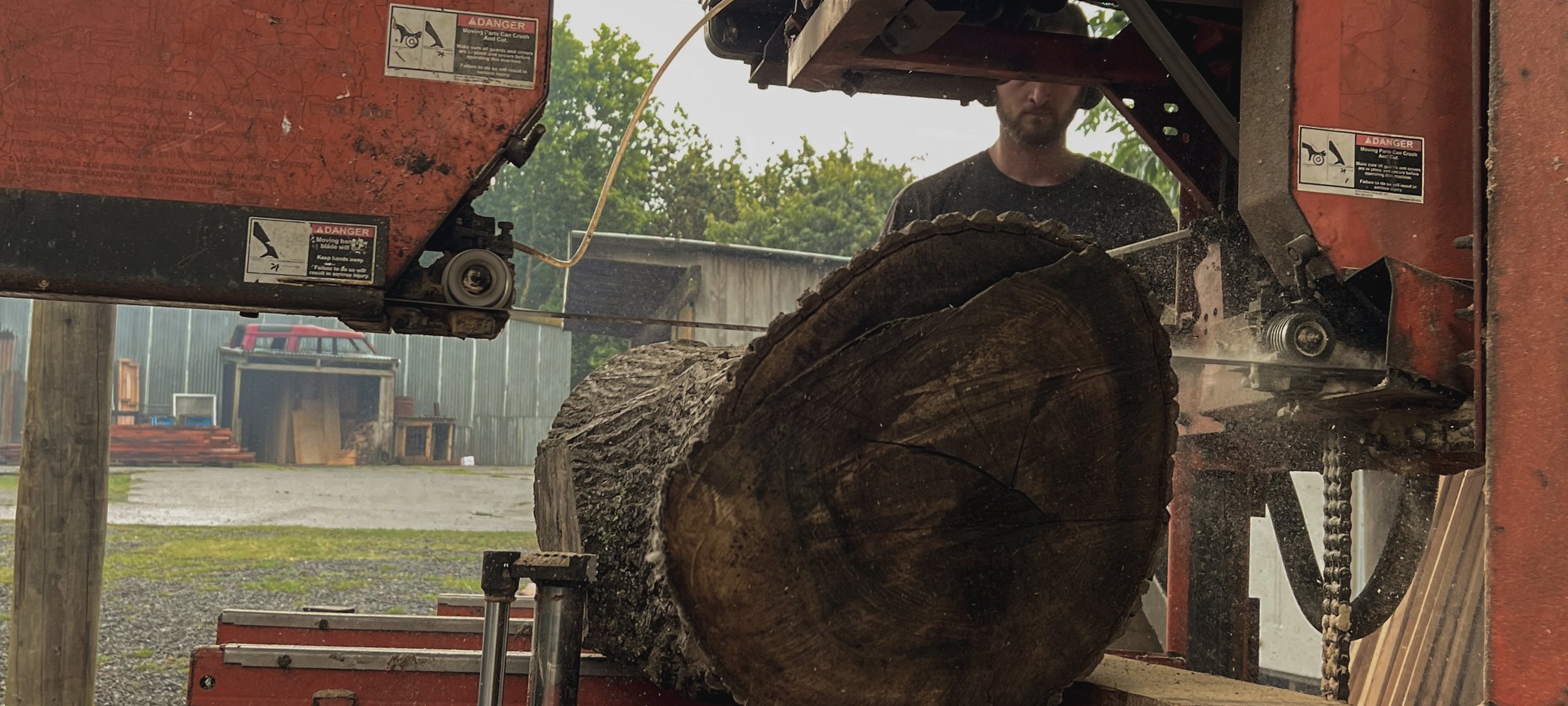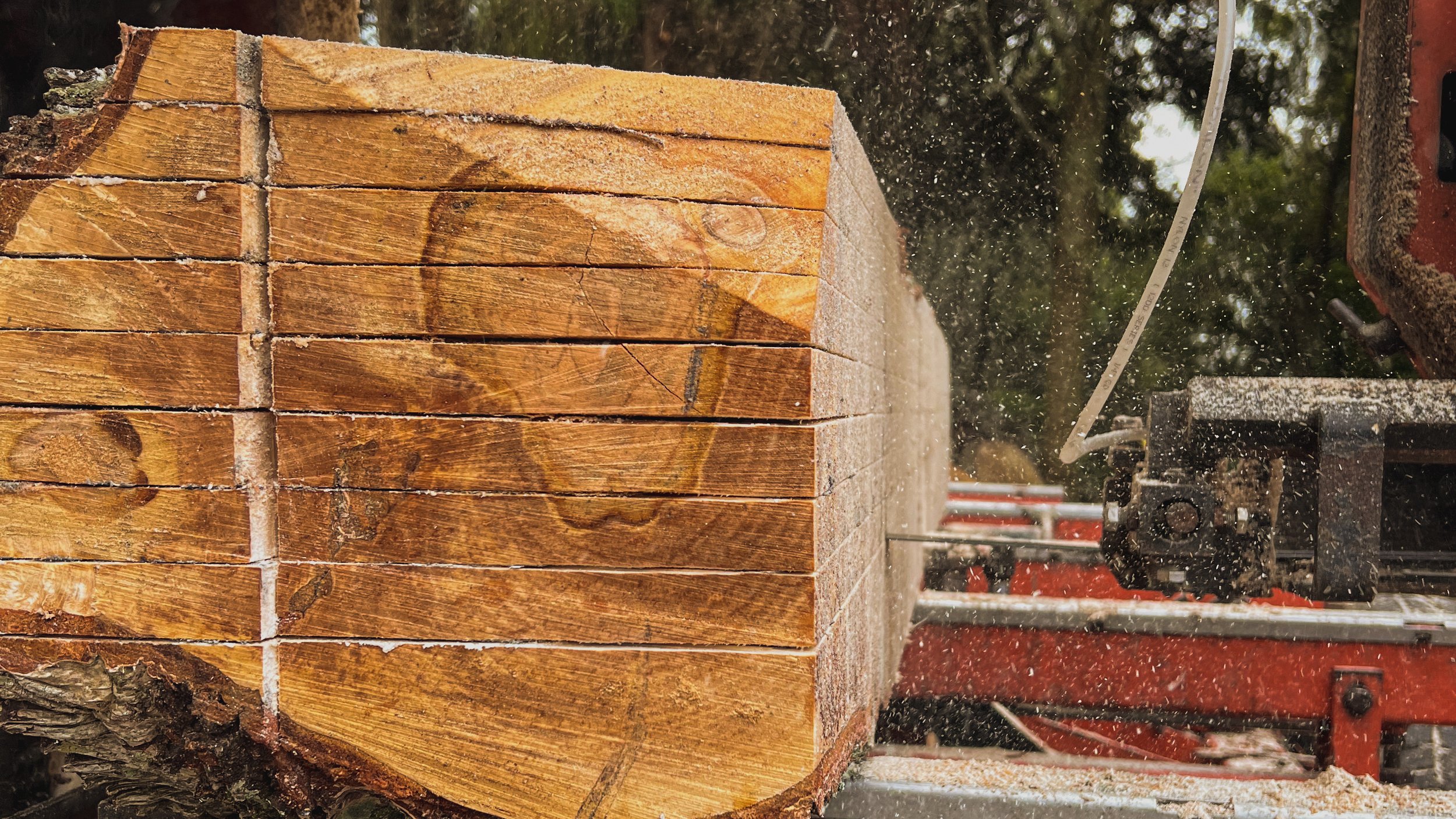Specialising in low impact harvested timber and unique creations.
We provide portable sawmilling and bespoke joinery services. Established in 2022 and based in the Waikato, the aim is to help our customers use natural resources better, turning trees into high value lumber. We can also assist in the creation of custom furniture and home furnishings, either using the trees from your own property or from our own stock.
Portable Sawmilling and Bespoke Joinery
Tired of watching trees rot away or get chopped up for firewood? You know that it is a waste but you’re not really sure what to do with it, and it can’t just sit there.
Then another storm comes through and knocks down a few more beautiful oak trees that your grandfather planted. Its too much of a shame to burn them, and you really want to do something meaningful with the timber.
The Dusty Carpenter can help with this! We provide a mobile sawmilling service where we come onsite and deal with the tree there and then. This leaves you with high value timber, at a fraction of the cost, that means something special.
Why portable sawmilling?
Easy and Efficient
There are a lot benefits to portable sawmilling but one of the best is the speed and efficiency. The mill comes to you and within 15 minutes of arriving it can be fully set up with the first log ready to mill.
Sustainable and Cost Effective
Transporting logs and having them milled at a large sawmill can be very expensive, especially if you only have a few. However, a mobile mill is able to do any job, no matter how big or small. Not only will you save money using a portable sawmill, you’ll also save by milling your own timber,
Your Needs Met
Custom cut lumber specifically tailored for your needs. From a single log, multiple sizes of timber can be cut at once. This reduces waste, makes the most of your timber and ensures you get exactly what you need, how you need it.
Testimonials.
-
Finn joined the team at 370 for an epic milling operation. Finn hits the ground running with a wealth of knowledge, enthusiasm and epic attitude. Such a pleasure to work with and we are thrilled with the product milled. Can’t recommend him enough. Have already booked the next milling dates. Really hard worker, fits in with any team and nothing is a problem. Top bloke!!!!
Kelly Humphrey
-
We had a mirror made for our bathroom in oak. It was a custom build. From the start the communication was prompt and he knew exactly what we wanted. The end result was FANTASTIC. I love the mirror. Well glued, smooth and a great balance of design. Would definitely recommend!
Sarah Quinn
-
Finn helped me mill up some Blackwood for furniture making and it was an absolute pleasure, he’s patience in explaining different cuts and checking in with me through the process, giving options to improve yield and quality was spot on. It’s great being able to work with a miller is also an accomplished craftsperson, it makes all the difference.
Tim Bruce
-
Totally rate Finn and his milling ability. Has milled for us twice and the results were excellent. Intelligent approach, great communication, always on time, respectful and works hard, which makes for great value and results.
Murray Jeffrey
FAQs
-
That depends on several factors and it can have a very large impact on overall production.
1. The condition of the log is a big factor, a long straight log with no branch extrusions makes it much easier to mill. If the log is oversized in diameter, has large kinks or bends in it, branches stemming out or is very short (less that 1.5m) then the time to mill increases.
2. Another important factor is what sized lumber I am cutting to. The smaller the lumber size, the more cuts I must make, therefore the more time that it takes. For example, cutting 200mm by 50mm railings will take a lot less time than cutting 30mm by 50mm battens.
3. It also depends on whether there is anyone there to assist me or not, and what machinery you have available. If there is I can focus on milling and do not have to worry about stacking or filleting the lumber.
As a rough calculating figure, I can average between 6 to 10 logs at 500mm-600mm in diameter and 5m in length. Please note that this is a rough figure and will depend on the above factors.
-
The area I need to operate the mill is relatively small. However, it is always better to have a bit of space to stack the wood, have the logs ready and move machinery around. At a minimum I can work in an area 8m by 4m, with room to park my truck close by. An ideal size is anywhere from 12m by 8m.
-
I only need a single person to assist. Often, they will be waiting for me to finish cutting lumber before being able to move it and stack it, so any more than that is usually an overkill. If they can operate a chainsaw that is a bonus, but not a critical requirement.
-
The timber is rough sawn but often comes out extremely smooth, requiring only 1 or 2 passes through a thicknesser to get the desired finish. The mill is very accurate and produces lumber to within 1-2mm repeatably.
-
This depends on the method used. For air drying timber there are a lot of factors going into it. I have written an article here detailing the best method of air drying (to my knowledge and experience). As a rule of thumb, I recommend 1 year per 25mm of thickness.














